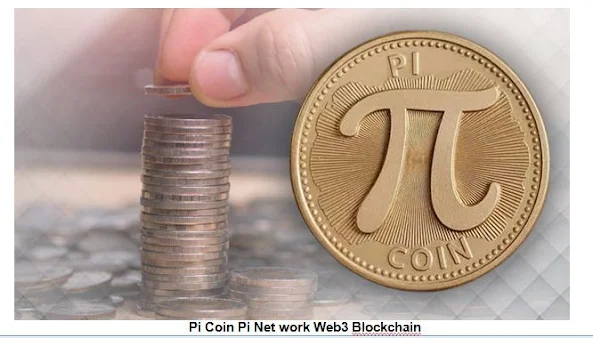UNESCO Internship 2025: UNESCO Application Process, UNESCO Eligibility,
Synopsis:
UNESCO has opened an Internship Programme, a learning opportunity
for students. They invite applications for their 2025 Internship Programme. The
Internship offers students and graduates an opportunity to gain hands-on
experience in a multicultural environment. It allows participants to work in
various fields, including Education, Culture, Natural Sciences, and more. The
internship duration ranges from 30 days to six months, providing a valuable
learning experience.
Key Details
- The
UNESCO internship offers young professionals and graduates an opportunity
to gain hands-on experience in a multicultural environment.
- From
application steps to eligibility criteria and the selection process, the
guidelines, as under, help you with everything the applicants need to know
to apply before the last date.
- The Interns gain experience in areas like Education, Culture, Natural Sciences, Communication, and Social Sciences.
- Applications
must be submitted online via UNESCO’s official website before December 31,
2025
- Interns
must have mandatory health insurance, as UNESCO only provides limited
accident insurance
- If selected, a UNESCO manager will contact the applicant directly within six months; otherwise, the application is considered unsuccessful.
How to Apply, Who Can Apply for the UNESCO Internship 2025?
UNESCO's 2025 Internship Programme is an excellent opportunity for recent graduates and students to gain valuable work experience in a global, multicultural setting.
If you recently completed your graduation or are pursuing a Ph.D or a master’s degree, you should not miss this golden opportunity to develop your skills and build your career through UNESCO.
The applicants can apply directly through UNESCO's official website namely: https://careers.unesco.org.
What is the UNESCO Internship Programme?
The UNESCO Internship is a practical learning experience designed to prepare students with technical and academic knowledge.
The program runs for a minimum of 30 days and can extend up to six months.
Interns get the opportunity to work in fields like Communication, Social and Human Sciences, Culture, Education, Natural Sciences, and more.
Check Eligibility Criteria and Know Who Can Apply.
To apply for the 2025 internship, an applicant to meet the following requirements:
- Currently
enrolled in or recently graduated from a Master’s, PhD, or equivalent
second-level university degree.
- Proficient
in English or French, both spoken and written.
- Familiar
with computer systems and software.
- Strong
communication skills.
- Minimum age of 20 years.
Key Details You Should Kno
- The
internship lasts between 30 days and 6 months.
- UNESCO
does not provide a salary.
- Interns
are responsible for securing their visas, travel, and accommodation.
- Health
insurance is mandatory, as UNESCO only covers limited workplace accident
insurance.
- You
must show proof of enrollment or graduation before starting.
- Interns will get 2.5 days of leave per month.
How to Apply for the UNESCO Internship 2025
- Visit
the official website: https://careers.unesco.org/
- On
the homepage, click APPLY ONLINE.
- Search
for internships by type, location, or field of interest.
- Read
the internship details carefully.
- Click
APPLY ONLINE for the desired program.
- Create
an account by entering your email, phone number, and other details.
- After
creating your account, sign in to continue.
- Fill
out the application form completely.
- Upload
all required documents.
- Submit
your application.
- Make
any necessary payments, if applicable.
- Take a printout of your submitted application for future reference.
What Happens After You Apply?
UNESCO managers will review your application. If selected, the concerned manager will contact you directly. If you do not hear back within six months, your application will not be successful.
Make sure to apply before the deadline of 31 December 2025.
UNESCO Internship Program: The Never-changing Parameters
UNESCO Internship offers students and new graduates the chance to gain real work experience in one of UNESCO's main fields. What you will learn
- Understand
how UNESCO works and what it stands for.
- Improve
your academic knowledge and technical skills by working on real tasks.
- Benefits
of the Internship:
- Learn
and grow under the guidance of experienced professionals.
- Work
with one of the most respected organizations in the world.
- You
will get 2.5 days of leave (holiday) for every month you work.
- Note:
UNESCO does not pay interns. There is no salary or other financial help.
- Important
things to know before applying:
- Get
your motivation letter and resume ready before starting the application.
- You
will have only one hour to complete the application.
- Make
sure your contact details are correct and will stay valid for at least six
months.
- Applications
are accepted only in English or French. If your documents are in another
language, you must also send a translation in English or French.
- You
can apply only once.
- Being
eligible does not guarantee that you will get the internship.
- If you are selected, a manager will contact you. If you do not hear back within six months, your application will not be successful.
Your application will be available to UNESCO managers worldwide
for six months, but not everyone will receive a reply.



